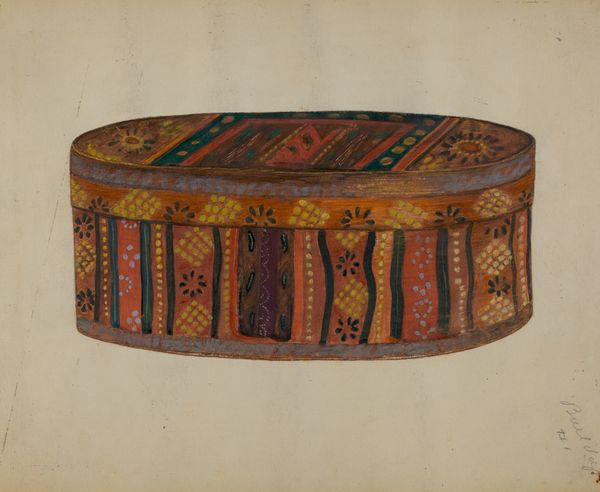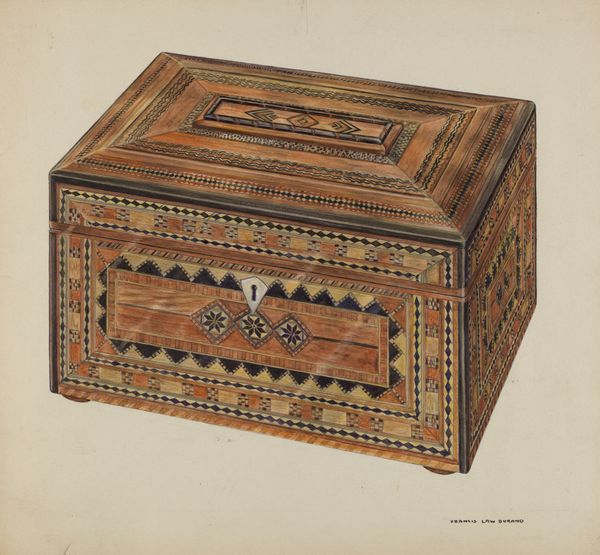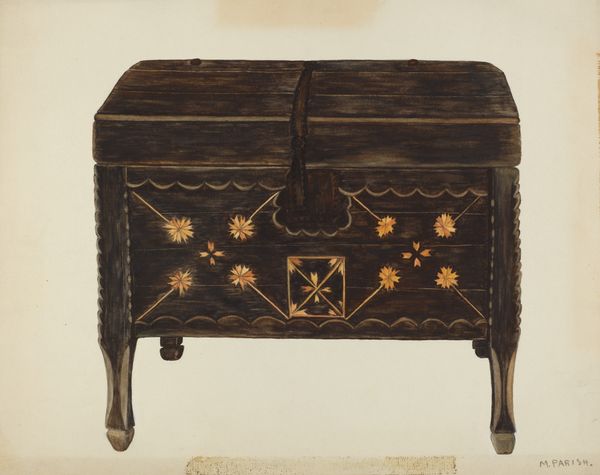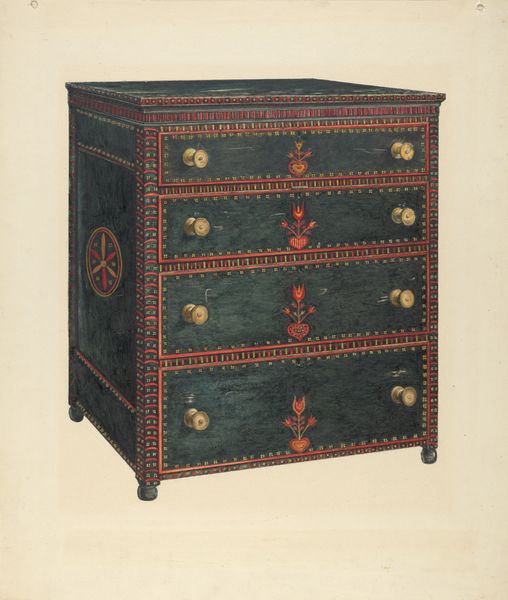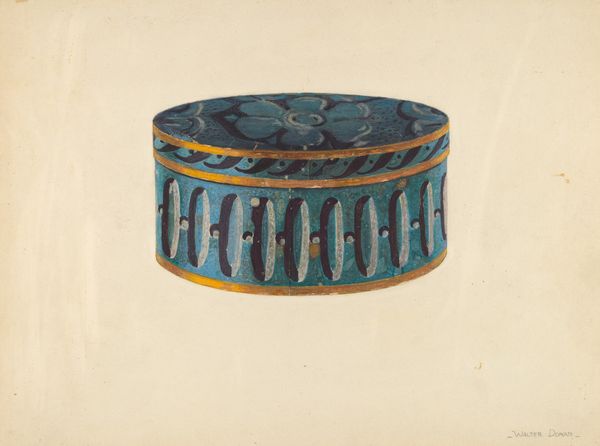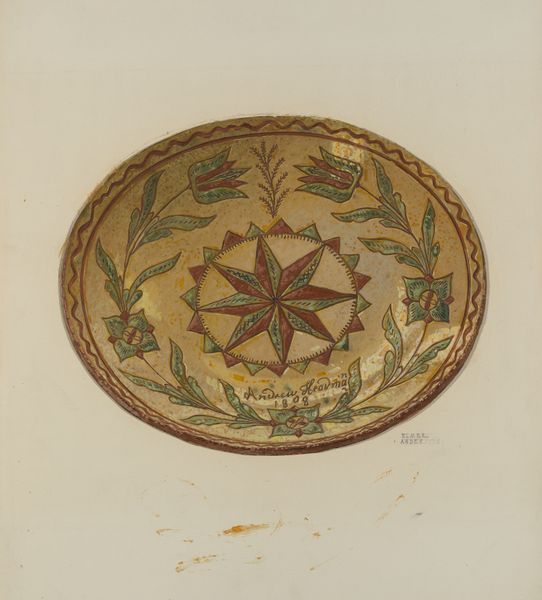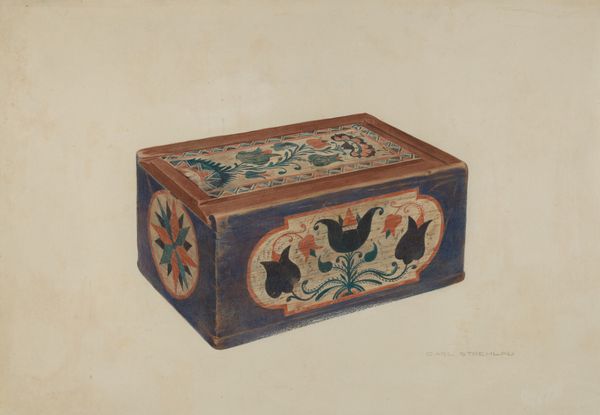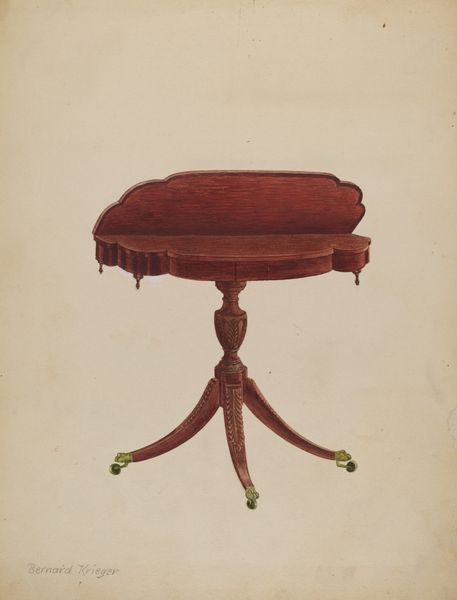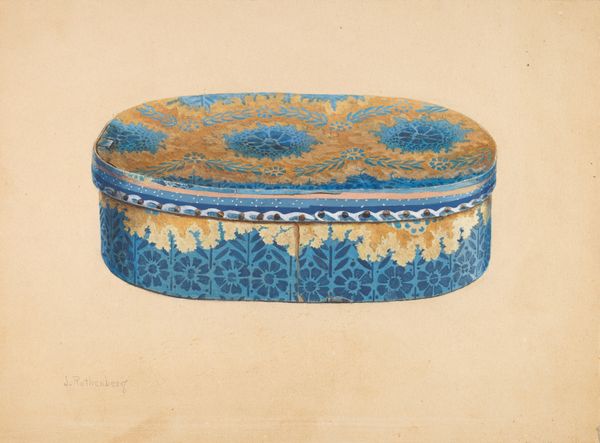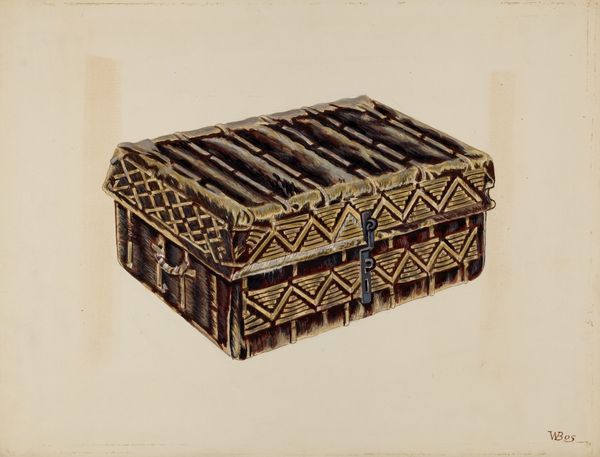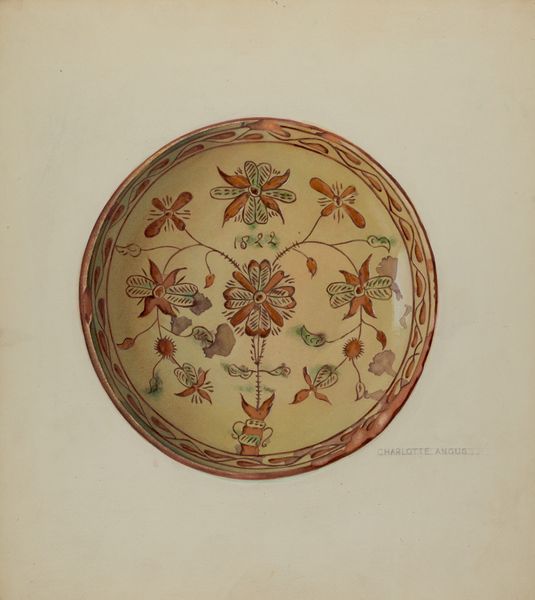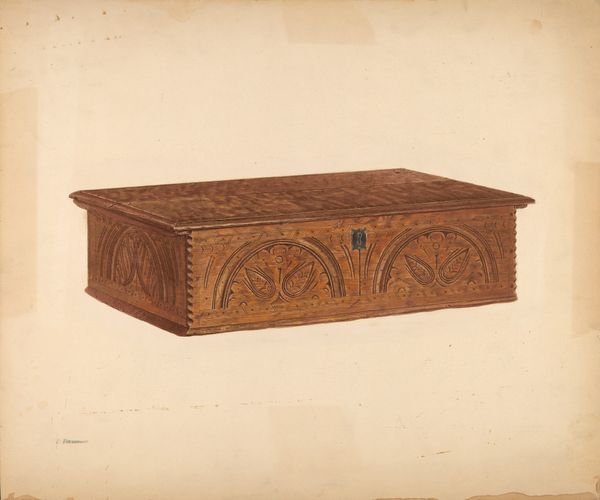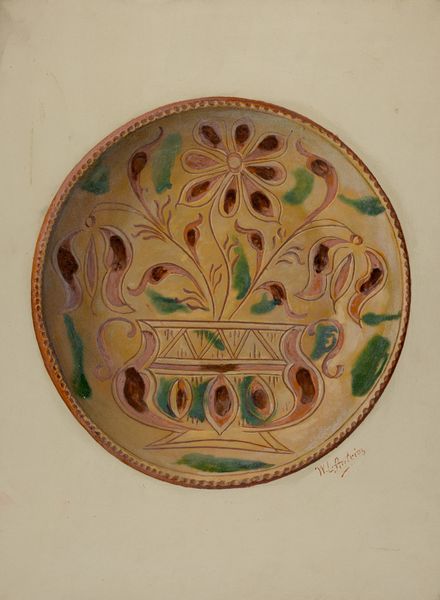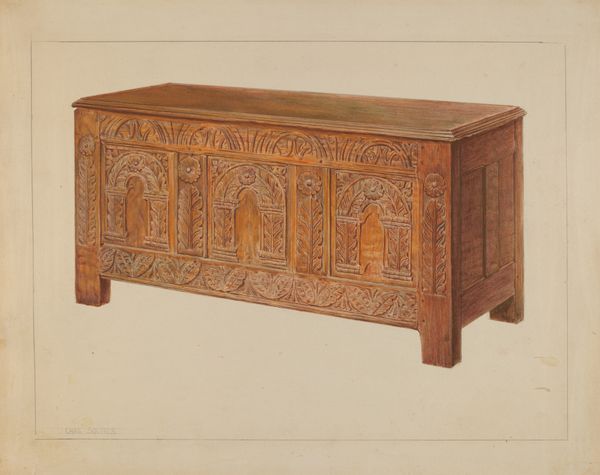
drawing, watercolor
#
drawing
#
caricature
#
watercolor
#
watercolour illustration
#
decorative-art
Dimensions: overall: 30.5 x 40.8 cm (12 x 16 1/16 in.) Original IAD Object: 9 1/2" high; 10" wide; 13" long
Copyright: National Gallery of Art: CC0 1.0
Curator: This delicate watercolor drawing, titled "Footstool", captures the charm of decorative art. The artist is currently listed as Anonymous. Editor: It's quite quaint, almost painfully so. I’m drawn to the dark indigo color of the cushioned seat and the rather decorative legs. I wonder, what was the intent? Was it purely decorative, or did it speak to something deeper in the society from which it emerged? Curator: Footstools are associated with rest, luxury, or perhaps subservience. Looking at the meticulously drawn embroidery, featuring diamond motifs, what emotional undercurrents might have flowed around such an everyday object in the hands of women, traditionally responsible for its creation? Editor: The domestic sphere is ripe for political examination. Such handmade pieces might represent an area where women held agency, imbuing their creations with symbolic resistance. The footstool is ostensibly a tool for relaxing, for reinforcing a certain socio-economic class’s ability to literally put their feet up, to be waited on. Who gets to rest and at whose expense? Curator: Consider the repetitive nature of embroidery, like mantra, each stitch imbued with focused energy and memory. The diamond form itself is also a potent symbol across cultures. In many Native American traditions, the diamond can symbolize a vessel for the soul, a protective container of essential self, so does the woman who created it intended for a seat and instead has more subtle goals? Editor: Fascinating to consider those hidden narratives! In that context, it would become a subversive act of quiet resistance – reclaiming both labor and domestic space, and creating these things to serve purposes we have been prevented from learning. Curator: Ultimately, what strikes me most is how much coded symbolism might exist within something so seemingly ordinary, it offers insight into cultural values of status, of rest, and maybe subversively, independence. Editor: Yes, this is how domestic objects become poignant reminders of larger social frameworks – quiet markers of power, labour, and subtle, possibly secret meaning-making by people whose history has been systematically undervalued or actively suppressed.
Comments
No comments
Be the first to comment and join the conversation on the ultimate creative platform.
